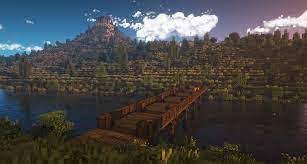
Introduction to Antiquità
Antiquità refers to historical artifacts, architectural details, decorative objects and furnishings originating from classical antiquity, typically ancient Greece, Rome and Egypt. These vestiges of ancient civilizations are admired for their skilled artistry, cultural significance and embodiment of timeless esthetic ideals.
What is Antiquità?
The Italian word “antiquità” means “antiques” or “ancient times”. It refers to a range of artifacts, artworks, architectural remnants and objects from Greek, Roman and other ancient Mediterranean civilizations. Antiquità includes statues, jewelry, tools, friezes, vases, furniture and more – essentially any manmade relic that has survived from antiquity.
Historical Significance of Antiquità
Antiquità provides a material link to distant history. Many antiquità artifacts originate from the height of classical Greek and Roman culture, serving as tangible evidence of the philosophy, values, art and ways of life during those eras. Studying antiquità lends insight into how public, private, political, religious and commercial endeavors functioned in antiquity.
Antiquità in Modern Times
Antiquità continues to influence modern culture through museums displays, private collections and commercial sales. Renaissance era Italian scholars revived interest in antiquità, inspiring a wave of classical style art and architecture. Today antiquità remains integral to the Italian national identity. An antiquità trade fuels tourism and connects collectors to history.
Importance of Studying Antiquità
There are many reasons why antiquità merits ongoing study and preservation:
- Understanding past civilizations through their material culture
- Safeguarding examples of unmatched ancient artistry
- Contextualizing modern philosophies and values via contrast with classical ideals
- Preserving cultural heritage and collective memory
- Inspiring continual revivals in art, architecture and design
By valuing antiquità, modern society pays tribute to the past while enriching the present. Even as technology progresses, antiquità endures as a cultural touchstone reminding us of enduring human creativity.
Overview of Article This article will provide an in-depth exploration of Italian antiquità. It covers the trade and collection of antiquità artifacts, as well as the influence of antiquità on architecture, literature, religion and art. Read on for a journey through this singular element of Italian cultural identity that links the present with the distant past.
Types of Antiquità Artifacts
Antiquità artifacts span a vast range of objects used in daily public and private life during classical antiquity. They include statues, busts, stelae, jewelry, coins, tools, friezes, mosaics, vases, and weapons crafted from materials like stone, metal, ceramic, glass and ivory. Decorative household objects and furnishings like murals, textiles and furniture are also highly prized.
Preservation of Antiquità
Artifacts Antiquitià may be preserved via museum archiving, private collection in climate-controlled environments or non-invasive study by scholars. Strict regulations now govern the antiquitià trade to curb looting and forgeries. Well-provenanced antiquitià with substantiated origins command the highest prices among collectors and cultural institutions seeking to repatriate antiquities to their source countries.
Significance of Antiquità Artifacts
These artifacts allow modern society to tangibly connect with vanished civilizations. They also provide scholarly evidence of cultural practices and technical capabilities. For collectors, ownership permits an intimate, inspirational connection with history.
Examples of Antiquità Artifacts
- The Discus Thrower – Roman marble copy of lost bronze Greek statue
- Antikythera mechanism – Greek astronomical computer
- Warren Cup – Roman silver drinking vessel decorated with figures
- Riace bronzes – Greek original bronze statues of warriors
Antiquità Architecture Overview of Antiquitià Architecture Antiquitià architectural structures were constructed to grand scale using stone, concrete and brick. Classical orders featured simple, proportional columns, entablatures and ornamentation. Arches, domes, amphitheaters and basilicas enabled public gatherings. Richly decorated private villas had open, central courtyards.
Famous Antiquità Architectural Structures
- The Pantheon – Rome’s iconic temple with enormous concrete dome
- Colosseum – Massive Roman amphitheater seating 50,000 spectators
- Palace of Knossos – Minoan palace complex on Crete with frescoes
- Villa of the Papyri – Opulent Roman seaside villa buried by volcanic eruption
Characteristics of Antiquità Architecture
- Mathematical proportions and ordered, rational style
- Colonnades, porticoes and temples elevated on podiums
- Arched entryways, barrel vaults, and domed structures
- Decorative mosaics, stained glass windows and frescoes
- Grandiose scale buildings for civic institutions
Preservation of Antiquità Architecture
Many temples, bath complexes, stadiums and theaters exist as evocative ruins. Pompeii’s buildings were preserved intact by ash after Vesuvius erupted. Some structures like Rome’s Pantheon remain in active use since antiquity. Others have undergone restoration, though original materials are often integrated when possible.
Comparison of Antiquitià Architecture from Different Regions While sharing some key attributes like columns and arches, notable regional variations arose in antiquitià architecture:
- Greek – More understated temples on low platforms; refined Doric, Ionic and Corinthian orders
- Roman – Vast complex civic spaces like baths and arenas; towering victory columns
- Egyptian – Monumental pyramids and palaces with symbolic hieroglyphs
- Etruscan – Stylized frescoes and hypostyle hall tombs carved into hillsides
Antiquità Literature Overview of Antiquità Literature
Antiquitià literary works often reference Greek and Roman myths or historical wars. The earliest writings were epic poems attributed to Homer and philosophical dialogues authored by Plato. Classical playwrights like Sophocles penned tragic dramas while Virgil wrote the epic poem The Aeneid. Love poetry, satires, speeches and letters by Catullus, Ovid and Cicero survive too.
Famous Antiquitià Literary Works The Iliad and The Odyssey – Homer’s 8th century BCE Greek epic poems chronicling the Trojan War and Odysseus’ journey home.
The Republic – Plato’s 4th century BCE philosophical dialogue exploring justice in both individuals and society.
Medea – Euripides’ 431 BCE Greek tragedy about a scorned woman’s revenge on her unfaithful husband.
The Aeneid – Virgil’s 1st century BCE Roman epic chronicling Aeneas’ journey from Troy to found Rome after its sack.
Characteristics of Antiquità Literature
- Mythological themes and references to the pantheon of gods
- Heroes with tragic flaws meeting disastrous fates
- Meticulous records of military conquests and political alliances
- Debates over ideal forms of government and justice
- Comedic satires critiquing societal customs
Preservation of Antiquità Literature
Antiquitià writings survive on clay tablets, papyrus scrolls, vellum and parchment volumes which require strict climate and light controls for preservation. Fragmentary manuscripts and poems were also preserved in later copies made by medieval Christian and Islamic scribes.
Comparison of Antiquità Literature from Different Regions
The core of classical Greek and Roman literature has been conserved with only the authors’ names and select works still known for some ancient Near Eastern and Egyptian works. Greek comedies and dramas were more focused on mythic tragedy while Roman literature emphasized expansionist historical records. Chinese antiquit writings like Confucian Analects and Taoist texts took the form of philosophical wisdom literature.
Antiquità Religion Overview of Antiquità Religion
Classical pagan religions venerated anthropomorphic gods like Zeus, Athena and Mars ruling over domains like art, agriculture and war. Temples hosted ceremonies for deities while households maintained shrines to protective spirits. Philosophy questioned faith traditions even as individuals relied on divine guidance to navigate fate’s mysteries through divination rituals and oracles.
Famous Antiquità Religious Practices
- Delphic Oracle temple complex – High priestesses channel prophecies from Apollo.
- Vestal Virgins tending goddess Vesta’s sacred eternal flame in Rome forum.
- Ritual blood sacrifices of animals to consecrate Greek temples.
- Egyptian processions transporting sacred Apis bulls as deities incarnate along Nile.
Characteristics of Antiquità Religion
- Polytheistic pantheons personifying aspects of nature and civilization
- Priests and priestesses conducting rituals and offerings to idols in elaborate temples
- Public festivals featuring theatrical reenactments of myths celebrating gods
- Home shrines filled with carved statuettes petitioned for blessings
- Divination through astrology, patterns in entrails and divine messages in dreams/omens
Preservation of Antiquità Religion
Ruined temple complexes, votive statuary and fresco depictions of myths keep classical faith traditions alive. However, without access to rituals, recitations and ceremonies, experiencing the emotional impact and inner meaning of ancient Roman and Greek religion remains difficult for moderns. Traditions from Egypt and Mesopotamia leave even fainter traces.
Comparing Antiquità Religions Across Ancient Civilizations
| Religion | Pantheon and Major Deities | Central Texts and Beliefs | Ritual Practices | Temples and Shrines | Prominent Examples |
| Greek | Multiple anthropomorphic gods like Zeus, Athena, Apollo | Homeric epics; focus on myth narratives | Animal sacrifice, libations to gods; oracles & divination | Marble temples with altars for offerings; monumental statuary | Parthenon & Delphic Oracle site |
| Roman | Adopted Greek gods with new Roman names like Jupiter, Minerva | Temple inscription records; import of Greek philosophy | Ritualized bathing, offerings & feasts; vestals tending sacred flames | Public bath complexes, small shrines in homes and towns | Pantheon temple & Roman Forum shrines |
| Egyptian | Many animal and hybrid deities like Ra, Anubis, Isis | Pyramid texts, Book of the Dead; focus on underworld | Mummification, offerings for the dead; carved votive statuary | Stone temples with tombs, crypts and statuary | Great Pyramids of Giza, Karnak temple complex |
| Mesopotamian | Localized city patron gods reflecting aspects of nature | Epic of Gilgamesh tablet fragments | Ritual processions, hymn singing, sacrifice | Stepped mudbrick ziggurats with shrines atop high platforms | Ur Ziggurat dedicated to moon go |






